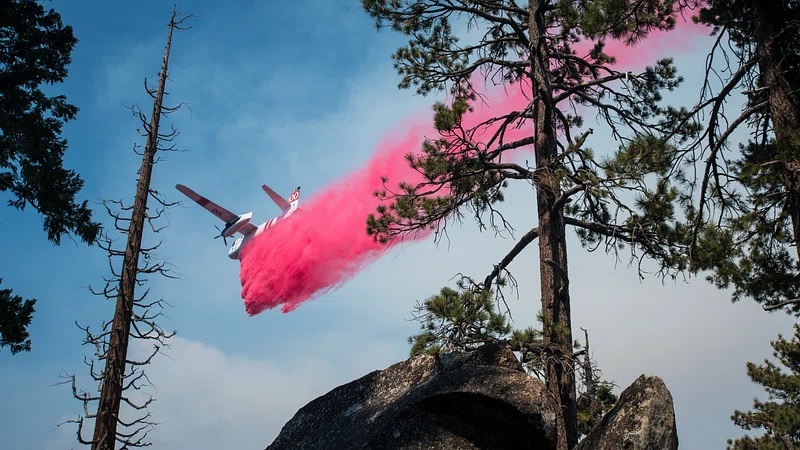Civil Aviation
Pink Clouds, Big Impact: The Science Behind Aerial Flame Retardants

Wildfires have been a growing threat for decades, and over time, firefighting strategies have evolved. One of the most effective methods for fighting these wildfires involves air tankers, large aircraft that drop flame retardant over the flames from above.
This tactic has been used since the 1950s, when planes started dropping chemicals to slow the spread of fires, especially in areas that are difficult for ground crews to reach. Over the years, these fire retardants have become a familiar part of firefighting efforts, particularly in the United States where wildfires regularly ravage vast areas of land.
Visiting the UK? US, Canada, and Australia Travelers Face New Entry Costs
Today, as devastating wildfires continue to spread across Los Angeles County, the bright red clouds of flame retardant dropped by air tankers are a common sight. But what exactly is in the pink-colored retardant, and how does it work?
What is Pink Flame Retardant?
The substance being dropped from planes is called Phos-Chek LC95, a type of fire retardant that has been in use for decades. Manufactured by a company called Perimeter Solutions, it is one of the few products approved by the U.S. Forest Service for aerial firefighting. The bright pink color of the retardant is not just for show; it’s a marking agent that helps firefighters track where the retardant has been applied.
Drone Disrupts LA Firefighting Efforts by Damaging Aircraft
The primary job of this flame retardant is to slow the spread of wildfires. It does this in several ways: cooling and coating fuels (like trees and brush), depleting the oxygen that the fire needs to spread, and slowing the rate of combustion. This gives firefighters more time to control the fire and protect both lives and property.
Why is it Pink?
The pink color of the flame retardant is a simple but useful feature. It allows firefighters to see where the substance has been dropped, ensuring that no area is missed. This is crucial when dealing with large fires, as it helps teams prioritize areas that still need attention.
How Effective is it?
Air tankers and fire retardants have been an essential part of firefighting efforts since the 1950s. While they can be very effective in slowing fires, there is also a debate about their long-term effectiveness and environmental impact. Some experts argue that they are not always as effective as hoped, and they are expensive to deploy.
Additionally, the chemicals used in flame retardants can wash off into rivers and streams, potentially polluting the water and harming aquatic life. These chemicals can also be toxic to plants and animals if they land on sensitive ecosystems.
Are There Better Alternatives?
While the use of flame retardants is still widespread, there is growing interest in finding safer, more eco-friendly alternatives. Scientists are working on new products that could replace traditional flame retardants with non-toxic options. Along with these innovations, there is a greater emphasis on fire prevention measures, such as controlled burns and forest thinning, which reduce the amount of fuel available for fires.

